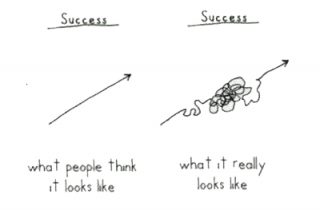
Ask anyone at a social gathering, “so, what do you do?” Most people reply with a job role or title. If pressed, they will list the things they are responsible for or the activities they carry out in their role. What you never hear is a short, complete list of the results they are accountable for producing.
We seem wired to think in terms of action and responsibility. The consequence? A working culture dominated by trying to do too many things at once, never having time to think, only responding to (rather than initiating) events, feeling pressurised and rushing from pillar to post. The result is long hours, stress, tiredness, lack of satisfaction, irritability – you know the syndrome.
Given that we are wired this way, we do what we believe we’re good at, what we like doing, or if all else fails, what’s most urgent! At more senior levels of management, where activity discretion is greater, this can produce teams of people working extremely hard but not producing required results.
If you examine job descriptions in almost any organisation, they consist of broad statements of areas of responsibility, and if more detailed, of lists of activities. Job descriptions like this reflect our obsession with activity rather than output, and fuel the culture of ‘hard work’ and long hours. You don’t get the satisfaction that comes from knowing you have done precisely what is required and done it to the required standard.
So what’s the alternative?
There is another powerful way of defining a role that fosters a culture of output, results, satisfaction and recognition. What it requires is the time and mental rigour necessary to challenge the existing way of thinking, and think about the job in a new way. Individuals and teams who go through this process find that they have a new mental ‘map’ of their own role, that of each of their colleagues and that of the team as a whole.
If you grabbed one of these people at a party and asked, “What do you do?”, they would say something like, “I’m accountable for producing profitable new business, a motivated high-performance team, an efficient, best-practice business operation, and satisfied & delighted clients”. They would know exactly how each of these areas was measured and the exact status of their performance against each measure without having to look it up!
How’s it done?
How do you achieve this degree of clarity and rigour? Get the team together. Taking one job at a time, and using as a starting point the lists of areas of responsibility and associated activities in team members’ job descriptions, rigorously and meticulously group activities into themes. Now, question among yourselves what the output of each group or theme is. Don’t jump to quick conclusions but work together on each statement of output until you are all satisfied that it expresses exactly what you agree the role exists to deliver. Always work with an outside facilitator, to ensure that you miss nothing and don’t become bogged down in your existing view of the team.
In the process, every team member becomes absolutely clear on the outputs (usually no more than six) of his or her role, and how these are to be measured. Because the whole team has an input into each role, each team member is left confident that he/she is carrying out exactly the role required of them, to the right standards.
In the process, gaps and overlaps between roles are uncovered and resolved. Misunderstandings about the exact purpose of a set of activities are sorted out, and often whole groups of activity are dropped, as it becomes clear that they serve no useful function! The whole team knows exactly what it exists to produce, and each team member knows exactly what his/her unique contribution to that result needs to be. Added together over a whole organisation of any size, this focus on the deliverable outputs of every job will produce the results that everyone has committed to producing.
‘Unsticking’ the organisation!
The questions asked in the ‘unique contribution’ process are straightforward and confronting. The process of getting clear, simple answers often presses sacred buttons that uncover the nature of the ‘stuckness’ in organisations: it forces misunderstandings, ambiguity, clashes and unwritten beliefs/rules into the open (another good reason to use an external facilitator!).
However, you will find that the effort involved is more than repaid. The process unlocks the commitment, passion and inspiration of the individuals who participate in it, and the work of the team comes together to produce more cohesive plans and greatly enhanced results, all with more collaboration, more recognition and far less ‘hard work’!
Would your team benefit from a systematic and rigorous look at what it exists to deliver? Give us a call on 01865 881056 if you’d like to explore the idea further.


About The Author: Kate Mercer
Kate creates working environments that allow you, your people and your organisation to produce great results through communication, real teamwork and streamlined working practices.
More posts by Kate Mercer